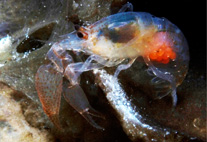Abstract
The chromosome complements and male meiosis of 12 species belonging to the subfamily Harpactorinae from north India have been described for the first time. All the species show twelve pairs of autosomes and X multiplicity with 9 species having X1X2X3Y and 3 species having X1X2Y sex mechanism. The general course of meiosis in all the presently studied species is fairly uniform. Autosomes show a high degree of decondensation and sex chromosomes are condensed during the diffuse stage. Single terminal chiasma per bivalent is seen in all except Sycanus croceovittatus Dohrn, which has two terminal chiasmata in one or two bivalents. A regular arrangement of chromosomes at metaphase I has been observed in 7 species, but in the rest, no definite pattern is recorded. In Euagoras erythrocephala Livingstone and Ravichandran, more than one type of arrangement is seen. At metaphase II, autosomes form a ring in the center of which lies the pseudomultivalent in all the species excepting Rhynocoris costalis (Stål). In Sycanus croceovittatus, a proper pseudotetravalent is lacking. Cytogenetic trends within the subfamily have been discussed in the light of newly added cytogenetic data of 12 species, which may later be used in tracing the evolution of chromosomes in Harpactorinae.

